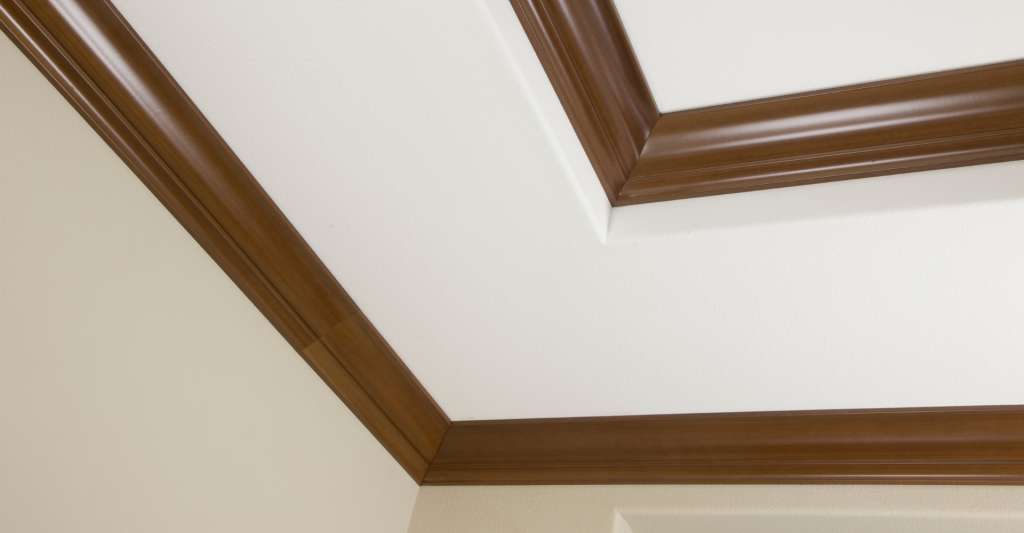
The process of molding is often one of the final steps in completing the decoration and design of a dream house. Molding fills in the dead space between walls and floors and walls and ceilings, as well as that around doors and windows. Without molding, the overall look would be uncomfortable and jarring. Crown molding in particular is crucial for corners at the tops of walls, where the wall meets the ceiling at an angle. Crown molding angles must be determined before completing this particular trim. Crown molding is an essential application for spaces where two walls converge. The angle must first be determined before this process goes any further, however. The molding must be cut at a 90-degree angle so that the pieces properly fit around the walls and fit snugly into this corner. The piece of molding is then cut at a 45-degree angle to properly separate them, allowing them to meet smoothly and accurately for maximum effect. The result of a proper crown molding angle is to bring these three individual components together as one, helping them meet properly just as they were intended when they were first created. Without crown molding, these major home features look lost and disconnected. Volterra Architectural Products has a long catalog of crown molding products created to fit any type of trim where two walls meet. Some are short and angular, while others are long with flowing curves. Volterra manufactures crown molding for any size and style, and with the right wood type, these trims will provide depth, ambiance, and atmosphere to any room. Each and every product is held to Volterra's rigorous standards for quality, ensuring that each one is applicable to any design, no matter how unique. For a complete overview of the many crown molding angles offered by Volterra Architectural Products, call 602.258.7373 today.